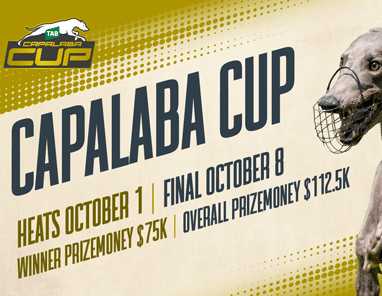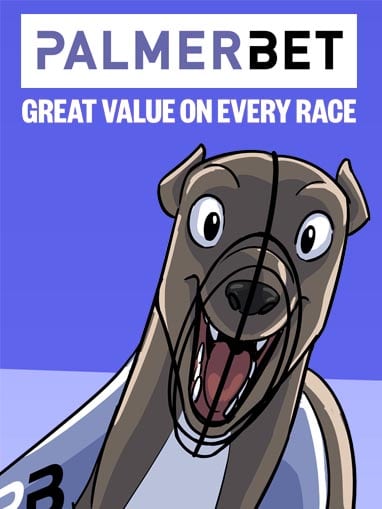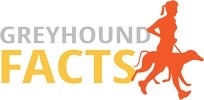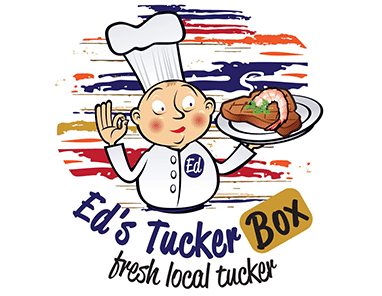
Each Tuesday highly respected former race-caller and greyhound historian PAUL DOLAN presents his ‘List of 10’. Today it is ‘10 former Qld tracks’.
Back in February I compiled a list of 10 tracks which have been closed in New South Wales. Most of the memories were from people involved with the clubs rather than my thoughts.
I didn’t think there would be 10 Queensland tracks which have closed over the years. But there are 10. At some stage I attended all of these venues. I called at every track bar one. So, let’s jog some memories, listing these tracks in order of oldest to latest to have their doors locked forever.
1 – GOLD COAST QUEEN STREET 1988: Racing was conducted there from 1976 for 12 years. Race distances were 390, 560, 650 and the occasional 920 metres marathon. The track was bigger than most, with two long straights and two reasonably tight bends. The greyhound track was situated inside a harness track which also conducted TAB meetings. The harness track was very tight, with a circumference of just 591 metres. The Gold Coast Cup for greyhounds was always run over 560 metres.
The first Gold Coast Cup was won by Aurora Light, trained by Bob Bowman whose later involvement in the sport was as a racecaller then chief grader for Queensland. The last Gold Coast Cup at Queen Street in Southport was won by Riviera Chris, trained by a true gentleman in Jack Fitzgerald. Riviera Chris beat a class packed field. West Cape from the Pringle kennel was second and John Reimer’s very talented bitch Carlton Joanne finished third.
Queensland’s Russ ‘Minister for Everything’ Hinze owned quite a number of pacers and believed that the code, along with greyhound racing, deserved a better home on the Gold Coast than the tracks and facilities at Southport. In his capacity as Racing Minister and some other portfolios Hinze brokered a deal whereby new harness and greyhound tracks would be built on state government owned land at Parklands, about five kilometres inland from Southport. A new school would be built in Queen Street. No money actually changed hands for any of the land, the government built the new tracks and the school. Hinze’s demand concerning the racetracks was to get the best built for both codes. And that’s what happened. The harness code had a 1000 metres track as good as any in the land and adjacent was the magnificent ‘one turn’ greyhound track.
I have a vivid memory of the last day of greyhound racing at Queen Street. The infield semaphore board had been well past its use-by date and not worth salvaging. Within a very short time after the ‘all clear’ was given for that last race, the much maligned semaphore was set on fire, to the merriment of those watching.
By mistake, I had left a small piece of equipment in the broadcast box. I lived at the Gold Coast at the time and went to the track the next morning to retrieve that equipment. The demolishers were already at work and I had to literally climb through some rubble to get to the broadcast box from which the staircase had already been removed. When Russ Hinze said get something done, he meant it!
2 – GABBA 1993: Brisbane’s Gabba track commenced racing in April, 1972. A very unusual shaped track, resembling a pear, was installed around the famous cricket oval. The positioning of the grandstands impacted on the greyhound track’s shape. Some of the superstars of the 21 years of racing at the Gabba included Bomber’s Gal, Top Simbi, Wybelina, Iron Hawk, Magic Gull, Hopeful Doll, Miss Perlita, Whip Tip, Pretty Fearless, Rustic Venture, Kirsty’s First and the 29 times winner at the track Dancing Gamble.
In the late 1980s Australian Football was becoming increasingly popular in south-east Queensland. For the Brisbane Bears who later became the Brisbane Lions to make the Gabba their headquarters, the size of the oval had to be increased. Removal of the greyhound track would achieve that aim and so the government of the day, under Racing Minister Bob Gibbs, hatched a plan to relocate greyhound racing from the Gabba to inside the harness circuit at Albion Park. The decision caused a lot of angst including at the Gabba club’s committee and management. But crowds had dropped at the Gabba and it was considered that a safer track at a newer venue might be the shot in the arm that the sport was looking for.
During the Gabba’s 21 years of racing three trainers were dominant. They were Tony Zammit, Mike O’Byrne and John Reimer. Each won five premierships.
The record holders when the Gabba closed were: 420 metres Genuine Crown, trained by Mike O’Byrne, at 24.04. For 558 metres it was Tickety Boo from the Tony Zammit kennel at 32.14. The staying trip of 704 metres was to the credit of Kirsty’s Charity, trained by Harry Sarkis. Her time was 40.83. Two or three marathon races were run most years over 895 metres. The outgoing record holder for that distance was the Jeff Ahern trained Don’t Cry at 53.42 seconds.
There was only one instance of a dual Queensland greyhound of the year winner during the Gabba era. It may come as no surprise that greyhound was Top Simbi, winning in 1973 and 1974.
For 558 metres the first track record was set by the Paul Cauchi trained Ragsie on opening night, April 6, 1972. That record of 32.76 stood for just over a year until along came Top Simbi who lowered the record to 32.58. Then he lowered that figure to 32.50. And later to 32.48, a figure that stood for four more years until Peter Rayner’s Iron Hawk ran 32.39 in 1978.
Over 704 metres there were two greyhounds won ran a track record twice. Steve Coleman’s Katie’s Disco ran 41.57 on February 8, 1979, and the next month lowered that to 41.45. On April 18, 1985, the Gary Cameron-trained Kirsty’s First ran an equal track record of 41.42. A fortnight later she lowered that record to 41.19. There were no dual record breakers over 420 or 895 metres.
3 – LAWNTON 1995: Lawnton was a circular shaped track with a grass surface, situated on Brisbane’s northside. Race distances were 370, 482 and 609 metres. It seems that the club which was called the Metropolitan Greyhound Racing Club started racing at Lawnton in 1958, give or take a year or two. The club had, for various reasons, raced in different timeslots, initially Tuesday afternoon, then Monday night with TAB coverage followed by being made a bit of a ‘guinea pig’ by racing Tuesday twilight. There was TAB and radio coverage, but no Sky due to the huge cost the club would have had to pay.
The greyhound club’s relationship with its tenant the Pine Rivers Show Society was far from friendly. When there was a stalemate about a rental increase around 1994 some behind the scenes work was put in by the Control Board of the day for a move. Lawnton raced on Tuesday September 8, 1995. The next morning the Board announced, to just about everybody’s surprise, that the track was closed immediately and its Tuesday meetings would be run at Ipswich. It was, in a way, a message to the Show Society that their proposed rental terms were unacceptable.
So, there was no farewell or swansong meeting. The club wasn’t broke, far from it. It had $90,000 in the bank. You can lay the blame on the Lawnton closure at politics.
Secretary managers at Lawnton included Col Larder, Peter Foster, Peter Scott, Ian Fletcher, Karen Bell and the outgoing chief was Sarah Dubin.
Club presidents to be praised for their dedication to the club include Artie Belford, Col Miller and Peter Rayner.
Among trainers you would put the names John Reimer, Peter Rayner, John Allison, Ray Gatti, Margaret Quarrell, John Adams and Jeff Ahern up in lights.
The winner of the last Lawnton Cup was the Tony Zammit-trained Toss The Teddy in 1995. He was the $1.40 favourite and scored from box one for a prize of $20,000.
The great Flying Amy raced at Lawnton once. She won a newly created feature called the Circle of Fire in 1995, an event worth $20,000 to the winner. That was the only running of the Circle of Fire.
4 – TOOWOOMBA 2000: Following the popularity of the ‘one turn’ track at Parklands on the Gold Coast, a similar shaped track was built in Toowoomba. Racing commenced there in October 1985. I was one of around 3,000 people in attendance on the opening night. Most people who travelled there from below the Toowoomba mountain range went dressed for a balmy summer’s night. But the beautiful city of Toowoomba can produce a weather change almost as quickly as you can blink and most of us shivered all night as the temperature dropped.
The great Flying Amy won the Toowoomba Cup in 1995 in track record time of 25.48 seconds for the 457 metres sprint distance.
Not only was the Toowoomba track itself a magnificent facility so were the amenities for the public and the greyhounds. Unfortunately, the location at the Showgrounds, about 11 kilometres from the Toowoomba CBD, was far from ideal. The club battled along with initially Saturday night racing, then Fridays and later Wednesday night with Sky coverage. But the venue was deemed by the control body to be unviable. To the disappointment of the vast majority of licencees this was a terrible loss.
The voice of Darling Downs horse racing, trotting and rugby league football, Pat O’Shea, was the only permanent racecaller at the Toowoomba greyhounds during its 15 years of racing. O’Shea was an avid greyhound supporter, in fact he owned and trained some handy racers, the best probably being a bitch named Tops For Frosty. O’Shea led a campaign to salvage greyhound racing at Toowoomba, but even his influence couldn’t get the shut down decision reversed.
5 – MT. ISA 2002: In north -western Queensland, racing commenced in 1977. At the time the town had a population of around 25,000 people, most employed by the copper, lead, silver and zinc mining. When greyhound racing started it provided a new form of entertainment for the town.
Typical of the type of people who became involved were Karl and Gertrude Liepins, immigrants from Germany. They got their first greyhound in 1978 and remained involved until the track was closed for racing in 2002.
Thursday night racing was extremely popular. The annual Cup boasted excellent prizemoney, so much so that plenty of trainers based in south-east Queensland headed there for the series. Visitors to win the Cup included Vic Johnson with Rebel Attack in 1977, Peter Carr with Hardell in 1983 and Michael Zammit with Brisk Bill in 1994. Trainers from Mackay, Townsville and Cairns would target the Cup, as would some trainers from Darwin, which is 1600 kilometres each way.
I had the pleasure of calling the 1995 Mt. Isa Cup, won by the John ‘Boots’ Roberts- trained Reckless Strebor. The dog won by eight lengths for a first prize of $7,500.
As the years rolled by things changed in the mining industry. The introduction and subsequent popularity of FIFO (fly in, fly out) workers meant that the number of permanent residents in Mt. Isa reduced quite significantly. A victim of this change was greyhound racing. Many of the FIFO workers lived at the outlying mines which were springing up. They didn’t want to train greyhounds, nor were they in town on a Thursday night to go to the track. By 2002 the club struggled to provide enough fields to conduct race meetings. It wasn’t a case of the club being shut down by the control body. The club put its hands up and said there was no longer the interest among the town’s people to participate. Gertrude Liepins said racing at Mt. Isa was a lot of fun. But it turned to heartache when the only option was to cease racing.
A dog named Sophocles, trained by Tony Sweeney, put Mt. Isa on the national stage in 1989. The dog won 16 races in a row at the track, breaking Kate’s A Scandal and True Vintage’s successive wins record of fifteen. Sophocles stretched his winning sequence to 21.
Tony Sweeney, an Irishman whose father trained greyhounds in Ireland, took up greyhound training when the sport started in Mt. Isa and always had a dog or two in work. Sophocles was clearly his best.
John Delacour provides a similar story. In 1978 he was the proprietor of the BP Mt. Isa service station. He got the bug for greyhound racing and became a trainer. Before too long he had a smart sprinter named Springheel Jack who won races on three consecutive Thursdays in the one month. Much to the delight of John the bookmakers served the dog up at the attractive odds of 6 to 1, 6 to 1 and 3 to 1 in those wins. Backing that dog was more lucrative than pouring petrol at the BP servo.
6 – AYR 2003; The opening date of racing at this north Queensland town has been difficult to trace. I recall attending a meeting there in 1987 and the track had not been racing for many years. So, let’s say it opened sometime in the early-to-mid-1980s.
Ayr is 80 kilometres south of Townsville. The track was built inside the Ayr horse racing track. The idea was to take the sport to a new audience by way of Saturday afternoon meetings. Also, it would provide some variety for greyhounds trained at Townsville to the north and Mackay to the south.
The track was a sandy loam surface, 500 metres in circumference and a little unusual in shape. There were two short straights (front and back) of sixty metres each and two large sweeping turns with a radius of 67.6 metres. Race distances were 404, 487 and 603 metres behind a Bramich lure. Ayr raced approximately 26 times a year, with a recess during the extremely hot summer months.
In March, 1993, a dual-code meeting was staged on a Saturday afternoon with the gallops. There were eight greyhound and five thoroughbred races. The crowd of close to 1200 people was catered for by a healthy ring of bookmakers who reported brisk business on both codes. One bookmaker said that on an ordinary gallops day the crowd would be less than 200 people and on a greyhound day the attendance would probably be less than a third of that total.
Horse racing was moved from Ayr to the nearby town of Home Hill and greyhound racing struggled to survive as the only activity at the Ayr Racecourse.
7 – BEENLEIGH 2003: It seems that greyhound racing, as we know it, with a mechanical lure commenced at Beenleigh in 1949. When I first started going there locals would talk of the days when the field chased a lure which was dragged along by a motor cyclist. So the place is steeped in greyhound racing history.
The annual Queensland Cup, run in late June, always attracted a good number of city standard runners, from Brisbane and also parts of New South Wales. A definite standout was the great dog Rapid Journey in 1998. He smashed the 555 metres track record. Long time Beenleigh lure driver Bevan Williamson said that he had never put the throttle that drives the lure into full position, but this day he did.
Ray Gatti’s grand dog Call Me Roscoe won the Cup two years in a row, in 1981 and 1982. The ‘Minister for Everything’ Russ Hinze was on hand to present the 1982 trophy. Gatti enticed Hinze to the bar and told him he should sell off some of the harness horses he owned and buy some greyhounds. Hinze didn’t take up the suggestion but that was typical Gatti enthusiasm for the sport.
A greyhound named Amorous Amour was the only other to win two Queensland Cups. That was the first two runnings of the event, in 1949 and 1950.
The longest serving presidents of the Beenleigh club during my years of going there were Tom Costigan, a publican, and Gary Mackay, a butcher. I think that says something about Beenleigh being a grass roots level track. Secretary-manager Glen Hartig was similar, a no-nonsense man who got things done.
Beenleigh’s surface was transferred from grass to loam in 1998. At the same time lights were installed so twilight into the night racing could be held. It was out of the club’s control that it was moved from Monday afternoon racing to Tuesday twilight. Five years later, in 2003, the track was closed. The last Queensland Cup at the venue was won by the Michael Zammit trained Annie’s Commando.
Beenleigh’s meetings were transferred to the Gold Coast Parklands. Five years later Parklands was closed.
8 – GOLD COAST PARKLANDS 2008: Racing commenced in December, 1988, and was conducted for a few months short of 20 years. Originally a grass track, it was hailed as, in the eyes of many, the best track in the land.
The Gold Coast Cup, run in July, always attracted the cream of 457 metres chasers. In 1994 highly respected and successful Northern Rivers trainer Dennis Reid qualified four runners for the Cup final. They were New Fox, Urgency, Romany Gypsy and Travelling Ghost. Weight of numbers couldn’t get Reid first prize. In the field was a then rising star by the name of Flying Amy. She won that Cup with New Fox second home. Flying Amy won the Gold Coast Cup the following year.
The winner of the last Gold Coast Cup at Parklands was the Jason Thompson trained El Galo in 2008.
The Queensland government resumed the site of the greyhound track to build a new Gold Coast Hospital. A few years later the adjacent harness track was also closed, the government using that land to build competitors’ accommodation for the 2018 Commonwealth Games held on the Gold Coast.
9 – MACKAY 2009: Racing was conducted in this northern city from 1984 to 2009, at the Showgrounds which was quite close to the centre of town. The track was what you would call a traditional ‘two turn’ shape with a circumference of 464 metres. Race distances were 310, 456, 541 and the occasional 774 metres marathon. I had the pleasure of calling the Mackay Cup in 1989. The winner from box five was Banksia Bill, trained by Ken ‘Snow’ Hargreaves. Banksia Bill was going for 12 consecutive wins on the Mackay track although he had been beaten twice at Townsville in between some of the Mackay wins. Banksia Bill led all the way to win that Cup over top Townsville sprinter Paper Charm.
The best dog seen in Mackay’s first few years of racing was Mandarana Flyer, who won 13 consecutive races at the track for the Agius family. The son of Temlee won 28 races and was unplaced only four times in his career of 56 starts.
In its latter years the Mackay club struggled to survive. The introduction of Thursday night shopping at the newly built Caneland Shopping Centre saw a reduction in attendance at greyhound meetings. Monday nights were tried but didn’t work as well as hoped.
In 2009 the Greyhound Racing Control Board declared that, due to the limited number of participants, low nominations, poor race night crowds and low turnover the Mackay club would be deregistered from June 30, 2009.
10 – CAIRNS 2018: Opened for racing around 1974. The track was situated inside the galloping track. It was a similar shaped circuit to Mackay with race distances of 404, 544, 630 and for a few years an annual marathon over 867 metres.
It seems that the first Cairns Cup was run in 1978, won by Bronze Zepplin. Go Go Gadget won the Cup twice, in 1986 and 1987.
Station Master, owned by a priest whose first name was Pat, was a huge star in the early days of Cairns racing. Later, in 2004, Tropical One chalked up 23 consecutive wins at the track, an Australian record.
Just about every country and provincial track has a standout stalwart and in Cairns that was Emma O’Connor. There wouldn’t have been a job she didn’t do at the track, with the possible exception of race calling. But I reckon she would have made a good job of that had the occasion arose.
In 2009 the Cairns Club was placed under review by the Control Board at the same time as Mackay. Cairns survived and battled on. But in 2018 the GRA cited similar reasons to Mackay that Cairns would be closed. In particular a low population of trainers and greyhounds. And insufficient trainers travelling from other regions. The nearest region, Townsville to the south, is a four-hour drive each way.
The final night of racing in Cairns was on December 15, 2018. There were six races for a total number of 34 runners. Arthur Gosper trained half of the program with the wins of Spring Polly, Libby’s Hero and Sharhelian Star. The honour of winning the final race went to Townsville’s Glen Olsen whose Slow Dancer won the 544 metres free for all to end a chapter of history.
Queensland currently has racing at six venues which are Albion Park, Capalaba, Ipswich, Bundaberg, Rockhampton and Townsville.
Late next year or possibly a little later Albion Park and Ipswich clubs will merge and race at one venue, the under construction facility at Purga near Ipswich.
How long will the other tracks survive? Fingers are crossed on that one.









